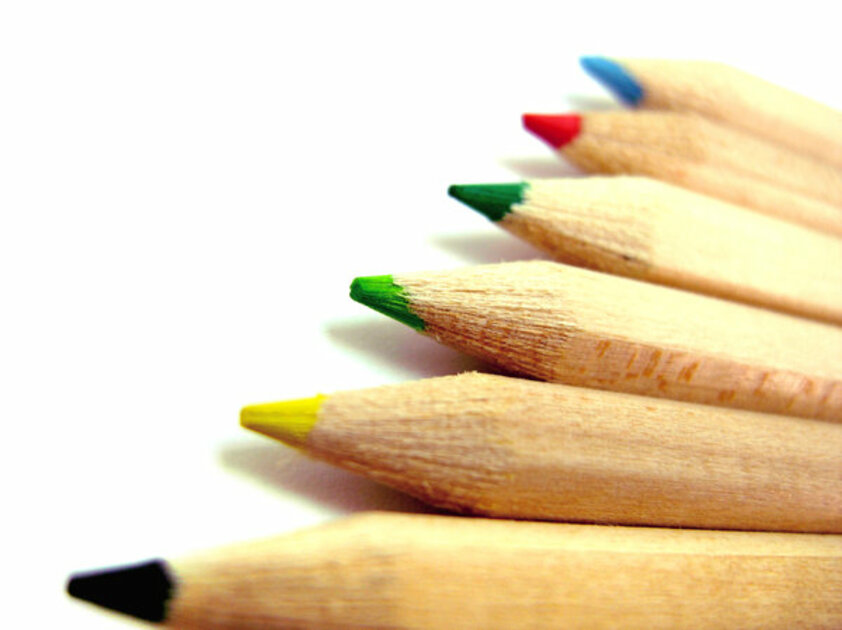
The Mishna on Amud Aleph makes the following observations about the Miraculous battle with Amalek as well as the copper snake that miraculously healed the Jews in the wilderness:
And it came to pass, when Moses held up his hand, that Israel prevailed; and when he let down his hand, Amalek prevailed” (Exodus 17:11). It may be asked: Did the hands of Moses make war when he raised them or break war when he lowered them? Rather, the verse comes to tell you that as long as the Jewish people turned their eyes upward and subjected their hearts to their Father in Heaven, they prevailed, but if not, they fell.
Similarly, you can say: The verse states: “Make for yourself a fiery serpent, and set it upon a pole; and it shall come to pass, that everyone that is bitten, when he sees it, he shall live” (Numbers 21:8). Once again it may be asked: Did the serpent kill, or did the serpent preserve life? Rather, when the Jewish people turned their eyes upward and subjected their hearts to their Father in Heaven, they were healed, but if not, they rotted from their snakebites.
This Mishna is a powerful reminder that no ritual nor any great Tzaddik or personality can achieve a miracle without the sincere and humble attachment of the Jewish people to God. However, we must wonder, if so, why did Moshe’s prayers matter, and why bother with making the Copper Snake in the first place? There needs to be some basis to arouse the process. We can also ask why the fearful soldier is sent home so that “he not melt the heart of his brothers” and sap their courage (Devarim 20:8)? Apparently, there is a need for inspiration and belief in order for the miracle to occur, and this inspiration was achieved by looking toward Moshe.
By the way, this is how we may understand the Sephardic custom of opening one’s hands when reciting the verse פותח את ידיך וגו׳ during Ashrei. Many people assume it is opening hands to receive God’s blessing. There is support for that interpretation from the verse in Bereishis (14:22), where Avraham says “הֲרִמֹ֨תִי יָדִ֤י אל ה “ which Onkelos translates as “אֲרֵימִית יְדַי בִּצְלוֹ קֳדָם” “I have uplifted my hands in prayer”. However, the explanation that is most plausible to me is that the gesture of opening hands is to inspire a heavenly response of opening hands, similar to Moshe raising his hands, inspiring the Jews to pray but also possibly enacting raised hands of victory. A proof for this concept comes from the custom to gather the four corners of the Tzizis when reciting in the Shema blessings והביאנו לשלום מארבע כנפות הארץ, bring us in peace from four corners of the earth (See Arukh HaShulkhan OC 60:9)
But what comes first, the Jewish people’s prayers or the inspiration from Moshe? Torah Temimah (Shemos 17:11) considers each possibility. That is, either when the Jews prayed properly then Moshe’s hands were uplifted, or when Moshe lifted his hands, the Jews were inspired.
The Alshich (ibid 17:8) makes a creative argument that the key element was the Jewish people’s humble submission to God with prayer, and that Moshe simply drew strength from them. He draws an analogy to Chanina ben Dosa, who is mentioned in Mishna Brachos (5:5):
They said about Rabbi Ḥanina ben Dosa that he would pray on behalf of the sick and immediately after his prayer he would say: This one shall recover from his illness and live and this one shall die. When they said to him: From where do you know? He said to them: If my prayer is fluent in my mouth as I recite it and there are no errors, I know that my prayer is accepted. And if not, I know that my prayer is rejected.
Thus, Moshe, like Chanina ben Dosa, was buoyed by the spiritual powers drawn from the Jews, and not the other way around.
Rav Tzaddok HaCohen Mi-Lublin (מחשבות חרוץ 13) explains this phenomenon from the opposite perspective. He says that sometimes a person can be stuck and need the help of another’s prayers or inspiration to break past a spiritual torpor. He brings proof for this idea from Kiddushin (30b):
If not for the fact that the Holy One, Blessed be He, assists each person in battling his evil inclination, he could not overcome it, as it is stated: “The Lord will not leave him in his hand” (Psalms 37:33).
Rav Tzaddok adds, sometimes Hashem has to send his help through a Godol Hador like Moshe Rabbenu to free the person. This idea helps us understand the theological basis for obtaining a blessing from a Tzaddik or Godol when we need help.
In the final analysis, perhaps the matter is left deliberately vague because both are true. The Jewish people needed Moshe, and Moshe needed the Jewish people.
Translations Courtesy of Sefaria, except when, sometimes, I disagree with the translation ![]()
Do you like what you see? Please subscribe and also forward any articles you enjoy to your friends, (enemies too, why not?)
 Previous
Previous

